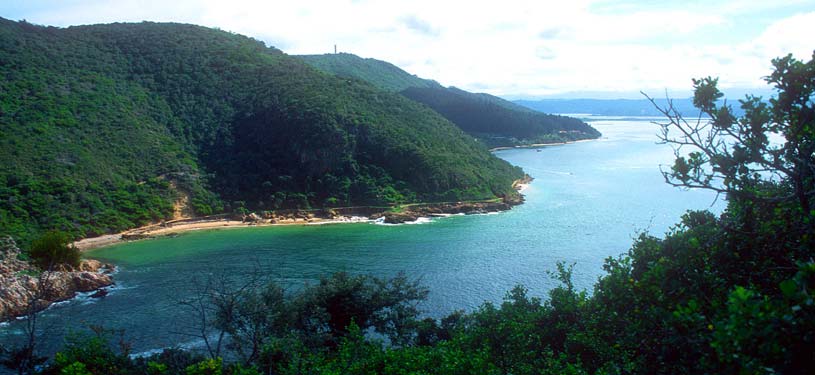|
|
|
|
|
A Brief History of Knysna |
|
|
|
|
|
|
   |
 |
|
|
|
The town "Knysna", a Khoi San word for "place of wood", rests
on the north side of the Lagoon, the tidal estuary of the Knysna Rive and has
a most interesting history.
|

|
|
First used by pirates preying on trading vessels, this jewel is well-disguised from
the seaward aspect. Sailing through the "Heads", a treacherous, narrow
passage guarded by high rolling cliffs, these plunderers of the high seas discovered
the perfect safe harbour - with indigenous forests full of hard wood to repair and
careen their ships, fresh water and plentiful wild game, they found santuary at
Featherbed Bay.
|
|
George Rex (alledgedly a bastard son of George III of England and a Quaker named
Sarah Lightfoot) colonised this paradise after being banished from England in 1797.
His grave in "Old Place" is a National Monument.
|

|
Landward access to Knysna in those far off days, when time was unimportant, was
extremely hazardous and arduous. Travelling by ox wagon or horses, the visitor negotiated
his way through dense Afro-Montane forests and deep ravines. Crossing swollen rivers
with the added danger of large herds of elephant and buffalo to reach this Eden.
|
|
|
These passes may still be driven and explored today. Woodworking crafts are still
practiced using the famous Knysna Yellowwood and Stinkwood which can be seen in
all the beautiful colonial buildings of the Cape.
|
|
|
|
|
|
|
World Travel Awards ~ Winner ~ 2012 Africa's Leading Green Hotel |
|
|